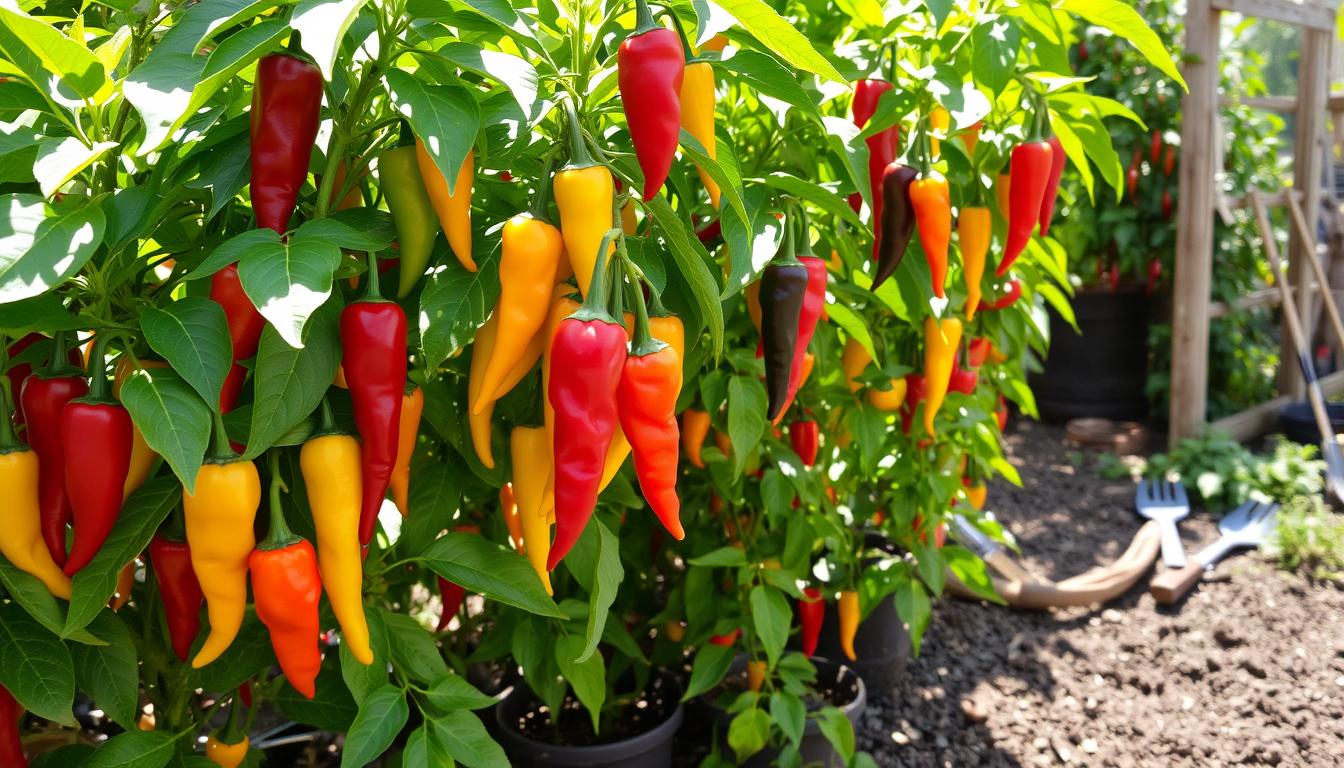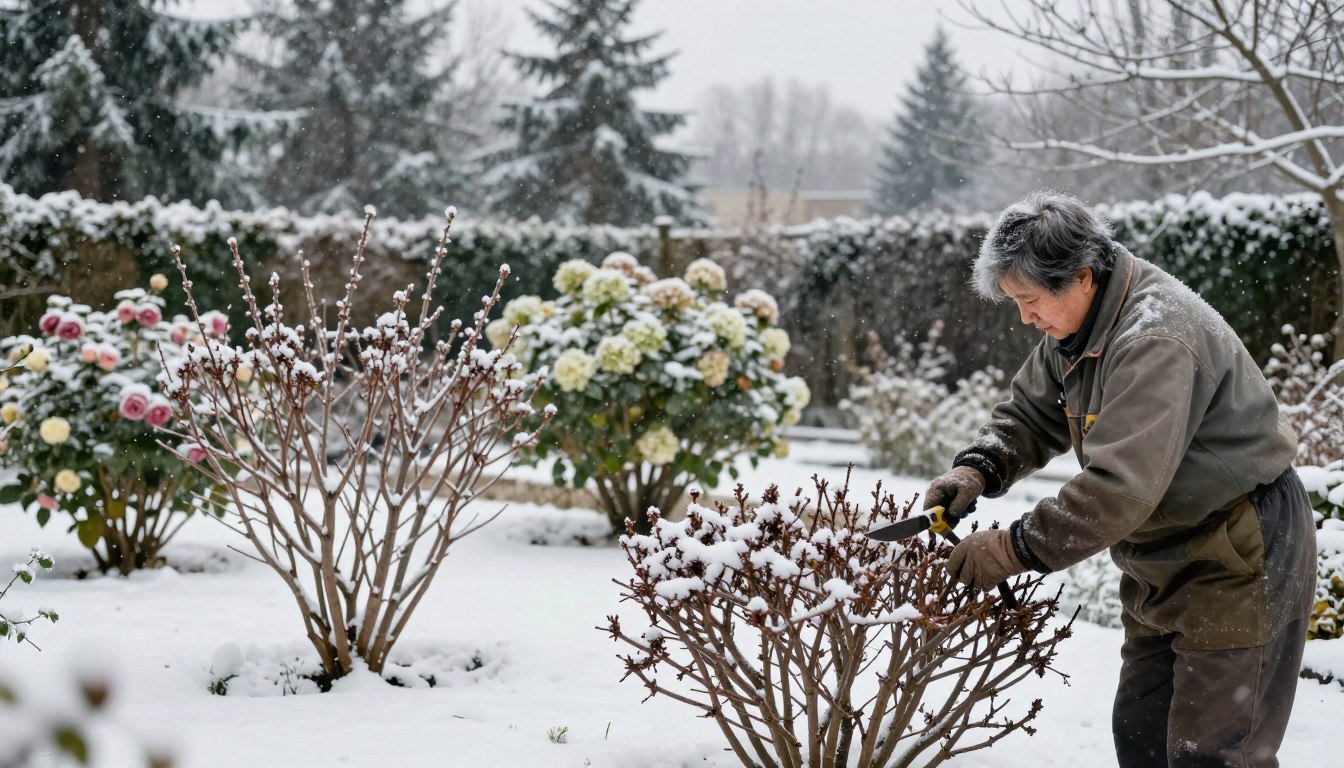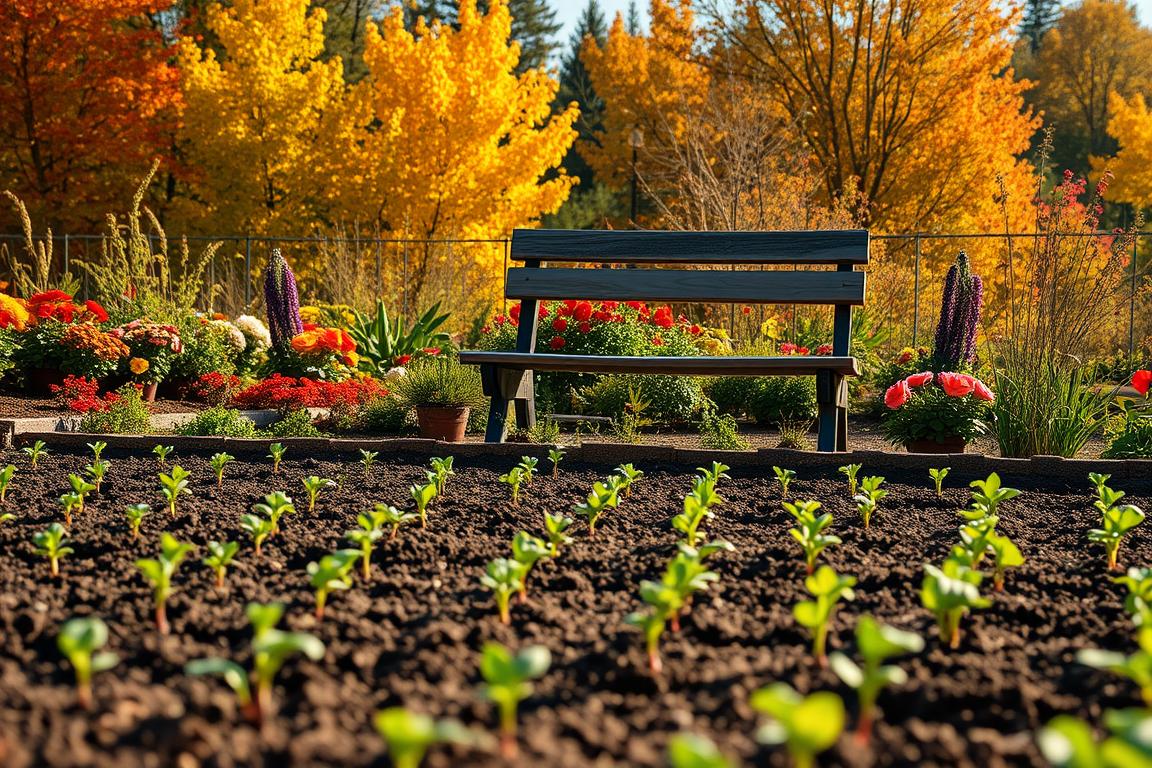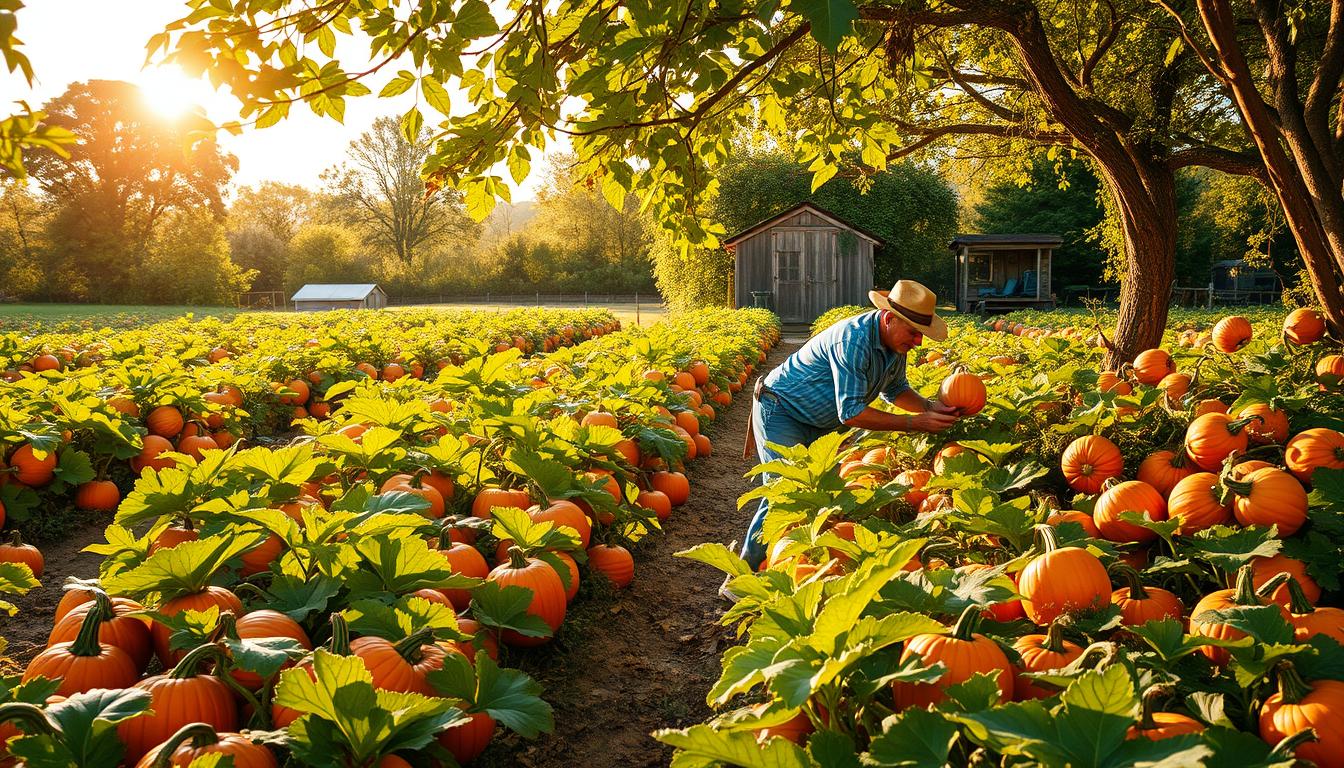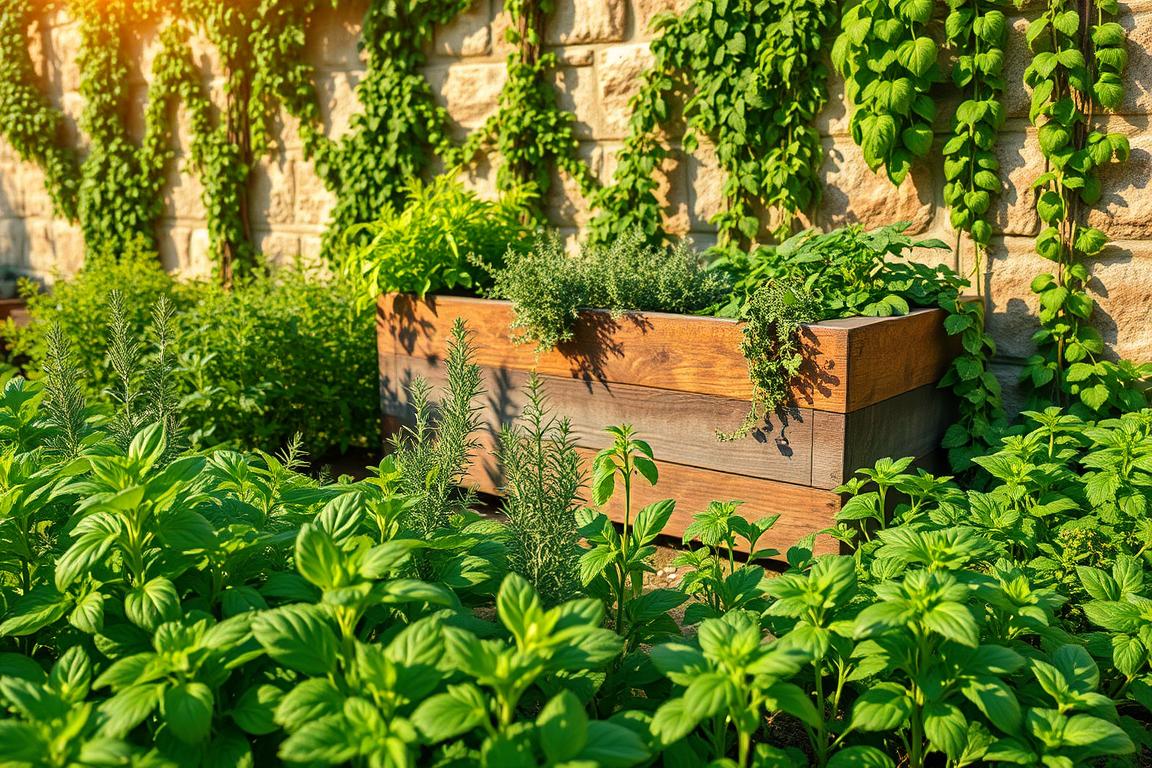Spicy chili gardening is a favorite hobby for many in the U.S. With 80% of Americans loving spicy foods, growing your own hot peppers is a fun and rewarding task. It’s all about the care and attention you give to your pepper plants.
Hot pepper cultivation is more than just planting seeds. It’s an art that needs you to know about sunlight, temperature, and growing conditions. Most hot peppers need at least 8 hours of direct sunlight a day. This helps them grow strong and flavorful, from mildly spicy to very hot.
Whether you’re new to gardening or have lots of experience, you can make your backyard a spicy haven. From jalapeños to Carolina Reapers, there are countless hot peppers to try. It’s a world full of flavors for those who love to cook and experiment.
Key Takeaways
- Hot peppers thrive with 8+ hours of direct sunlight
- Understanding Scoville heat levels helps choose the right peppers
- Growing conditions significantly impact pepper heat intensity
- Start seeds indoors for better germination
- Proper care leads to higher pepper yields
Understanding Hot Pepper Heat Levels and Varieties
Exploring hot peppers means knowing their unique heat. The Scoville Heat Scale helps measure pepper intensity. It guides you in picking the right peppers for your garden and cooking.
The Scoville Heat Scale Explained
The Scoville Heat Scale measures pepper heat by capsaicin levels. It was created in 1912 by Wilbur L. Scoville. This scale ranges from mild to extremely hot peppers. It helps you choose peppers based on your skill and taste.
- Mild Peppers: 100-2,500 Scoville Heat Units (SHU)
- Medium Peppers: 2,500-30,000 SHU
- Hot Peppers: 30,000-100,000 SHU
- Extra Hot Peppers: 100,000-300,000 SHU
- Extremely Hot Peppers: Above 300,000 SHU
Popular Hot Pepper Varieties for Home Gardens
Choosing the right peppers starts with picking varieties. Here are some popular ones:
- Jalapeño (2,500-8,000 SHU): Versatile and easy to grow
- Cayenne (30,000-50,000 SHU): Great for drying and seasoning
- Habanero (100,000-350,000 SHU): Intense heat for adventurous gardeners
- Poblano (1,000-2,000 SHU): Mild and perfect for stuffing
Choosing the Right Peppers for Your Heat Tolerance
Choosing the best peppers depends on your heat tolerance. Start with milder peppers like Anaheim or Poblano if you’re new. More experienced gardeners might try growing extra hot peppers like Carolina Reaper or Ghost Pepper.
Essential Growing Requirements for Hot Peppers
Growing hot peppers needs careful attention to specific conditions. Success comes from knowing the best conditions for these spicy plants to thrive in your garden.
Optimal Sunlight and Temperature Conditions
Hot pepper plants need lots of sunlight. They should get 6 to 8 hours of direct sun each day for strong and tasty peppers. Temperature is also key in growing peppers:
- Ideal daytime temperatures: 70°F to 90°F (21°C to 32°C)
- Minimum acceptable temperature: Above 70°F (21°C)
- Optimal germination temperature: Around 85°F (29.4°C)
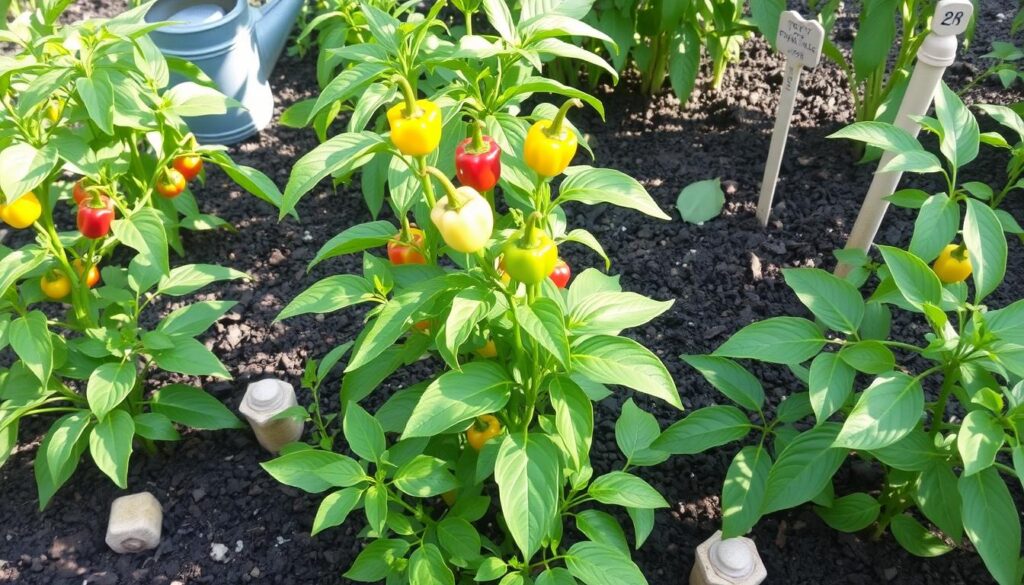
Soil Requirements and Preparation
Soil is crucial for hot peppers to grow well. A good growing medium can greatly affect your pepper harvest.
- Optimal soil pH: 5.9 – 6.5
- Incorporate organic compost before planting
- Ensure excellent drainage
- Use dark plastic mulch to warm soil
Watering and Fertilization Guidelines
Right watering and fertilizing are key for pepper growth. Keeping the soil moist and providing balanced nutrients helps plants grow strong.
- Water frequency: Every 2-3 days
- Keep soil consistently moist but not waterlogged
- Use low-nitrogen fertilizer (10-30-20 NPK ratio)
- Apply Epsom salts every two weeks to promote plant health
By following these tips, gardeners can grow delicious and spicy hot peppers with great yields.
How to Grow the Best Hot Peppers for Your Garden
Growing hot peppers needs careful attention to ensure a good harvest. Whether you garden in containers or plots, success comes from preparation and knowledge.

First, pick the right pepper varieties for your garden. Hot peppers need specific conditions to grow well and produce lots of fruit. Key steps include planting wisely, managing soil, and caring for your plants.
Essential Pepper Planting Strategies
- Start seeds indoors 8-10 weeks before the last frost date
- Provide 16 hours of grow light exposure daily for seedlings
- Maintain soil temperature between 70-80°F for optimal germination
- Use well-draining garden soil with pH between 6.2 and 7.0
Garden Soil Preparation Techniques
Good soil is key for growing hot peppers. Add several inches of compost to the top soil to help it hold moisture and nutrients.
| Soil Requirement | Recommended Specification |
|---|---|
| pH Level | 6.2 – 7.0 |
| Organic Matter | 3-4 inches of compost |
| Drainage | Well-draining composition |
Container Pepper Gardening Tips
Container gardening is great for small spaces. Choose compact varieties and make sure containers drain well. Pro tip: Pick containers at least 12 inches deep for better root growth.
- Use premium potting mix specifically designed for vegetables
- Select containers with drainage holes
- Position containers where they receive 6-8 hours of direct sunlight
- Water when top inch of soil feels dry
Success in growing hot peppers comes from patience, consistent care, and knowing your pepper variety’s needs. With the right techniques, you’ll enjoy a bountiful harvest of spicy peppers.
Planting and Care Techniques for Maximum Yield
Learning how to plant peppers is key to growing lots of them. To grow hot peppers well, you need to know how to plant, care for, and protect them from pests.
Starting Seeds vs. Using Transplants
Choosing between starting seeds or using transplants is a big decision. Seeds do best when planted 1/4 inch deep in a good seed starting mix. They need a warm spot, between 75 to 85 degrees Fahrenheit, to grow.
- Germination time varies from 7 to 10 days
- Maintain consistent moisture without oversaturating
- Use a grow light for 16+ hours daily to prevent leggy seedlings
Spacing and Support Requirements
Peppers need the right space to grow well. Plant them 12-18 inches apart for enough room to grow and breathe. Tall peppers need support from stakes or cages to hold up their heavy fruit.
| Pepper Variety | Recommended Container Size | Support Needed |
|---|---|---|
| Bermuda Peppers | 12-inch diameter | Light stakes |
| Thai Peppers | 3-5 gallon container | Sturdy cages |
| Pueblo Peppers | 15-inch diameter | Vertical trellising |
Common Pests and Disease Prevention
Keeping pests away from peppers is important. Watch out for aphids, whiteflies, and pepper weevils.
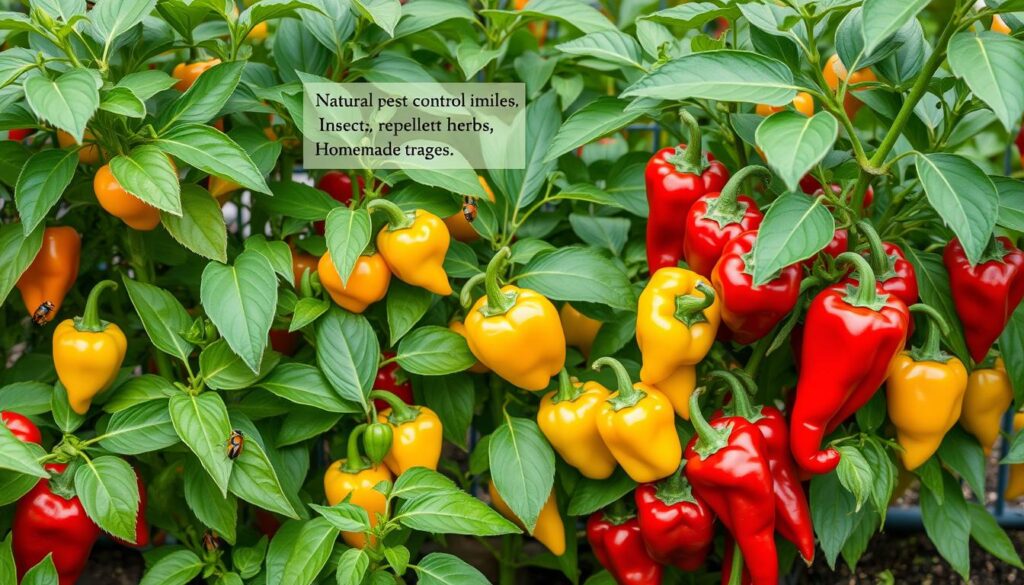
- Implement crop rotation annually
- Practice rigorous garden sanitation
- Use organic pest control methods
- Monitor plants weekly for early intervention
By using these methods, you can grow a lot of peppers. Your plants will be strong and healthy, ready to face common garden problems.
Harvesting and Storing Your Hot Peppers
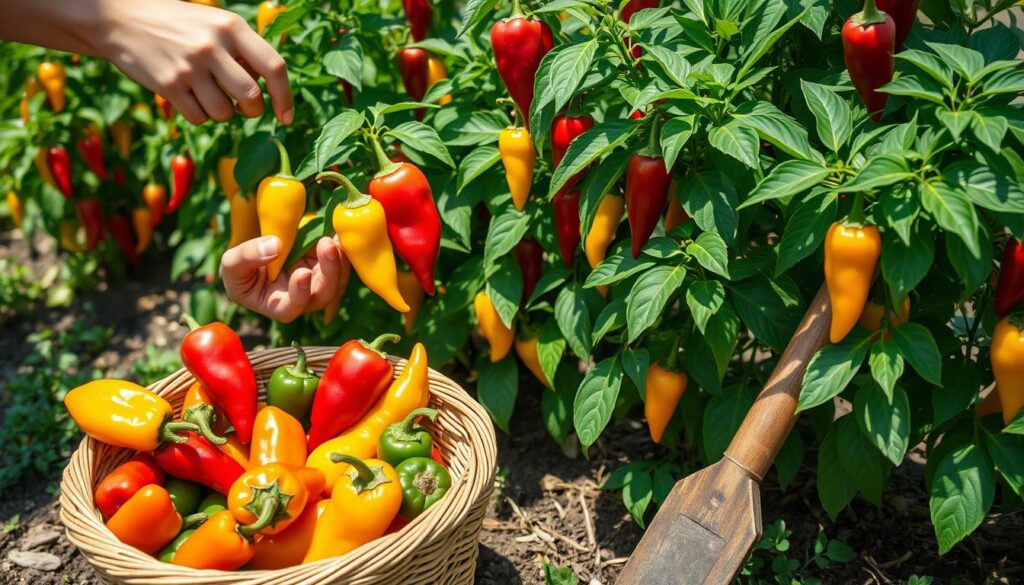
Learning how to harvest hot peppers is key to getting the most from your garden. It takes 90 to 150 days for pepper plants to grow, depending on the type. Timing and gentle handling are crucial for a good harvest.
Here are some important tips for harvesting hot peppers:
- Wear protective gloves to shield your skin from capsaicin
- Use sharp pruning shears to cut peppers with a short stem attached
- Harvest peppers when they reach full color and desired size
- Pick peppers frequently to encourage continued production
Storing fresh peppers needs attention. For short-term, keep them in the fridge at 40-45 degrees Fahrenheit. Pro tip: Keep peppers in a perforated plastic bag to maintain optimal moisture levels.
There are many ways to preserve your pepper harvest:
- Freezing: Chop and store peppers in airtight containers for several months
- Drying: Create ristras or use a food dehydrator for long-term storage
- Pickling: Extend pepper enjoyment into early winter
In climate zone 6b, aim to preserve about two gallons of pepper strips by the end of the season. Dried peppers can last over a year if stored in cool, dark places.
Conclusion
Hot pepper gardening is an exciting adventure for home gardeners. It lets you spice up your cooking. By learning how to grow spicy vegetables, you can turn your garden into a colorful pepper paradise.
Success comes from knowing each pepper variety’s special traits. You also need to give them the best care all season long.
If you love making your own pepper recipes or just growing hot peppers, start with careful planning. Choose the right seeds, manage soil nutrients, and keep pests away. These tips will help you grow a healthy pepper garden with lots of tasty peppers.
Every pepper plant is a story of patience and care. Try growing different peppers like jalapeños, habaneros, and specialty ones. This way, you can find your favorite heat and flavors.
With practice and a love for learning, you’ll become a great hot pepper gardener. You’ll grow amazing and delicious peppers right in your backyard.
Take on the challenge, enjoy the journey, and relish the spicy results. Your hot pepper garden is more than just a place. It’s a canvas for your culinary creativity and gardening passion.
FAQ
Q: What are the best hot pepper varieties for beginners?
A: Beginners should start with mild to medium heat peppers. Jalapeños (2,500-8,000 SHU) or Poblano peppers (1,000-2,000 SHU) are great. They’re easy to grow and adapt well to different conditions.
Q: How much sunlight do hot pepper plants need?
A: Hot pepper plants love full sun. They need at least 6-8 hours of direct sunlight daily. They grow best in warm temperatures above 70°F (21°C).
Q: When is the best time to plant hot peppers?
A: Start seeds indoors 8-10 weeks before the last frost date. Or plant outdoors when it’s warm. In most places, this is late spring after the frost is gone.
Q: How do I protect my hot pepper plants from pests?
A: Use companion planting like marigolds or basil. Try organic pest control like neem oil. Check plants often for pests and keep your garden clean.
Q: How can I increase the heat level of my peppers?
A: Grow plants in hotter, drier places. Less water and more stress can make peppers hotter. But, don’t forget to care for them properly.
Q: Can I grow hot peppers in containers?
A: Yes! Choose compact varieties and use containers with good drainage. Use a quality potting mix and place in full sun. Water often, especially in containers.
Q: How do I harvest and store hot peppers?
A: Pick peppers when they’re full size and the right color. Wear gloves to avoid capsaicin. Store them in the fridge for up to two weeks. Dry or freeze them for longer storage.
Q: What should I do if my pepper plants aren’t producing fruit?
A: Check for sunlight, water, and fertilization. Pinch off the first flowers to help growth. Avoid extreme temperatures to help fruiting.
Q: How do I handle hot peppers safely?
A: Always wear gloves when handling hot peppers. Avoid touching your face or eyes. Wash hands well after handling. Use milk to cool down if needed.
Q: What are some signs of disease in pepper plants?
A: Look for yellow leaves, wilting, spots, or stunted growth. Common diseases include bacterial spot and phytophthora blight. Remove infected plants to stop the disease.


